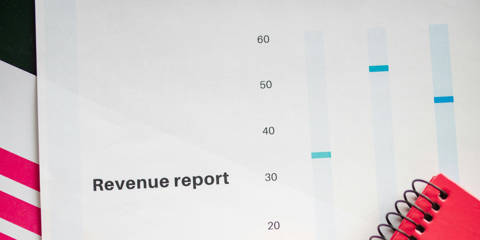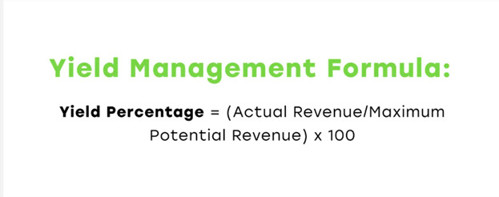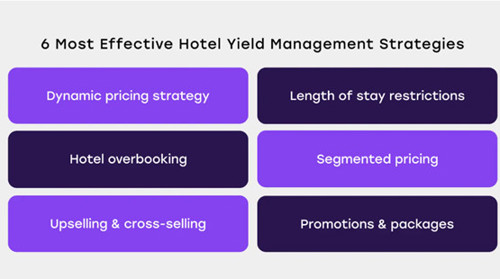Revitup.Direct Blog
Maximizing Revenue: Unlocking the Power of Hotel Yield Management

In today’s competitive hospitality landscape, data is king.
Yield management leverages data analysis to optimize room pricing and inventory, ensuring every decision is backed by numbers.
This guide explores the methods, metrics, and strategies that make yield management indispensable for hoteliers.
What is Yield Management?
According to Revitup’s team, Yield management is a pricing strategy that helps hotels align room rates with market demand, guest behavior, and competitor trends.
Borrowed from the airline industry, it ensures that you sell the right room to the right guest at the best price, every time.
Why is Hotel Yield Management important?
Hotel rooms are a one-time opportunity, if they’re not sold, the chance to earn money is gone.
Yield management helps hotels set smart prices, fill more rooms, and stay competitive.
By looking at data, hotels can change prices in real-time to match demand and earn more.
What is the formula for hotel yield management?
To measure performance, use this formula:

- Actual Revenue: Total income from room sales.
- Maximum Potential Revenue: Revenue if all rooms were booked at the highest rate.
Example:
If a hotel has 20 rooms priced at $150 per night and sells 15 rooms at an average of $120, the actual revenue is $1,800. The yield percentage is:
(1,800 / 3,000) × 100 = 60%
This means the hotel captured 60% of its revenue potential.
Yield Management vs. Revenue Management
While both aim to boost profitability, they differ in scope:
- Focus: Yield management focuses on room pricing and occupancy, while revenue management takes a holistic view of all revenue streams.
- Scope: Yield management applies to room sales; revenue management includes F&B, spa services, and events.
- Approach: Yield management is tactical and immediate; revenue management is strategic and long-term.
- Responsibilities: Yield management adjusts room prices, whereas revenue management analyzes data, optimizes guest experiences, and coordinates revenue streams.
What are the benefits of Hotel Yield Management?
Increasing Revenue:
Yield management helps hotels earn more by setting rates that reflect demand, even when the economy slows.
Filling More Rooms:
Dynamic pricing keeps occupancy high by adjusting room rates based on demand patterns, ensuring no rooms go unsold unnecessarily.
Managing Inventory Better:
Yield management tools allow hotels to predict demand and adjust room availability, so they’re always ready for busy times.
Weathering Economic Challenges:
When fewer people travel, yield management helps hotels stay competitive by adjusting rates and keeping occupancy steady.
Beating the Competition:
By offering prices that match real-time market conditions, hotels can stand out and attract more bookings.
Building Trust Through Transparency:
Guests appreciate clear pricing, like lower rates in off-peak seasons. It shows fairness and encourages direct bookings.
Creating Better Guest Experiences:
Tailored pricing and packages make guests feel special, whether they’re celebrating an event or traveling with family.
Allocating Resources Wisely:
Yield management ensures that hotels invest in staff and services where they’re needed most, improving guest satisfaction while keeping costs under control.
What are the elements of yield management in the hospitality industry?
Revitup’s professionals highlight that yield management in hotels works by combining historical insights with external factors, like competitor prices and market conditions.
This combination helps hotels respond to demand shifts and maximize earnings.
Key elements of yield management include:
- Forecasting: Anticipating future demand using past performance, market trends, and external factors to make data-driven decisions about pricing and inventory.
- Inventory Control: Strategically manage room availability to ensure resources are allocated efficiently and revenue is maximized.
- Dynamic Pricing: Continuously adjusting rates based on demand, competitor prices, and booking trends to capture maximum revenue.
- Segmented Pricing: Customizing rates for different customer groups based on factors like loyalty, booking channels, or duration of stay.
- Overbooking: Accepting more reservations than the available capacity to offset no-shows and cancellations, ensuring optimal occupancy.
- Length-of-Stay Restrictions: Setting minimum or maximum stay requirements during peak periods to manage resources and increase profitability.
- Competitive Pricing Analysis: Monitoring competitor rates to maintain market competitiveness.
- Performance Analysis: Assessing strategies by tracking key performance indicators (KPIs) like ADR, RevPAR, and GOPPAR to refine yield management tactics.
- Promotions and Packages: Offering tailored deals or bundled packages to attract specific customer segments and boost occupancy during low-demand periods.τις περιόδους χαμηλής ζήτησης.
- Booking Window Management: Adjusting prices and availability based on how far in advance bookings are made to balance short-term and long-term revenue.
- Yield Management Software: Utilizing advanced tools to analyze data, predict demand, and automate pricing for optimal results.
What are the most effective hotel yield management strategies?
To maximize revenue, hotels employ a combination of proven yield management techniques.

Effective Yield Management Strategies:
- Dynamic Pricing
Automatically adjust room rates based on real-time market trends. Prices increase during high demand and decrease during slow periods to maximize occupancy and revenue. - Overbooking
Strategically overbook to offset cancellations and no-shows. Proper management minimizes guest inconvenience while maximizing revenue. - Up-selling και Cross-Selling
Encourage guests to upgrade rooms or purchase additional services like dining or spa treatments to boost revenue. - Length-of-Stay Restrictions
Set minimum stay requirements during peak periods to optimize occupancy and profitability. - Customer Segment Pricing
Offer tailored rates to specific groups, such as families or corporate clients, to attract a diverse audience. - Promotions and Bundled Deals
Combat low-demand periods with special packages that include extra services, encouraging longer stays and higher spending.
How to Implement a Yield Management Strategy:
Step 1: Dive Deep into Guest Insights
Understand your guests by analyzing:
- Demographics
- Spending habits
- Booking patterns
- Preferences
Dividing your customers into groups helps you set prices that match their needs. For example, leisure travelers usually book in advance and care more about price than business travelers.
Step 2: Evaluate the Market and Competitors
Analyze your business's strengths and weaknesses and keep track of competitor prices to make sure your rates are attractive to budget-conscious travelers.
Step 3: Use Data to Shape Rate Plans
Analyze:
- Room sales by date
- Reservation patterns, including no-shows
- Booking trends during events
Use these insights to create precise pricing strategies.
Step 4: Create a Dynamic Rate Plan
Develop a year-round plan that considers the following:
- Demand forecasts
- Booking limits
- Opportunities for up-selling
Regularly review and adjust the plan to stay aligned with market changes.
Step 5: Merge Yield and Revenue Management
To get the best results, use yield management as part of a larger revenue plan that ties pricing with promotions, booking systems, and daily processes.
Final Thoughts:
Revitup’s team believes that hotel yield management is a powerful tool for maximizing revenue, maintaining competitiveness, and enhancing guest satisfaction.
By leveraging data and adopting dynamic strategies, hotels can turn insights into action, ensuring profitability even in challenging market conditions.

